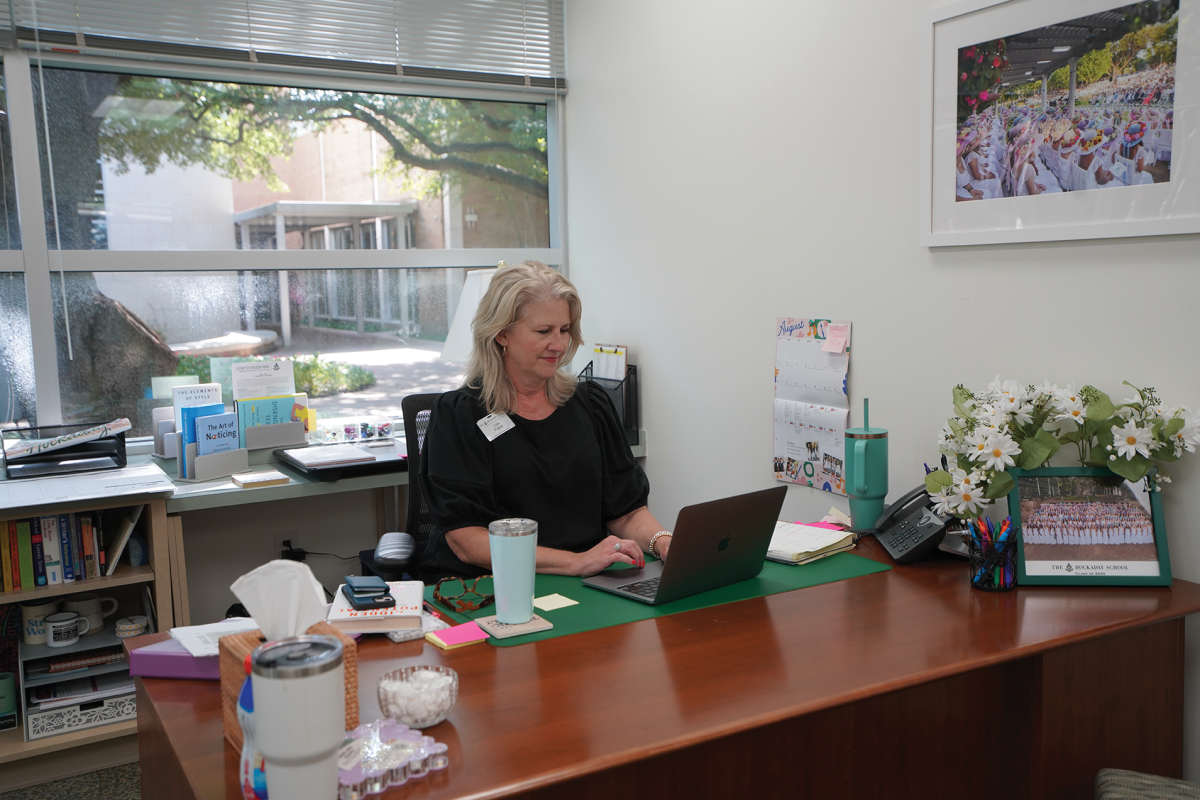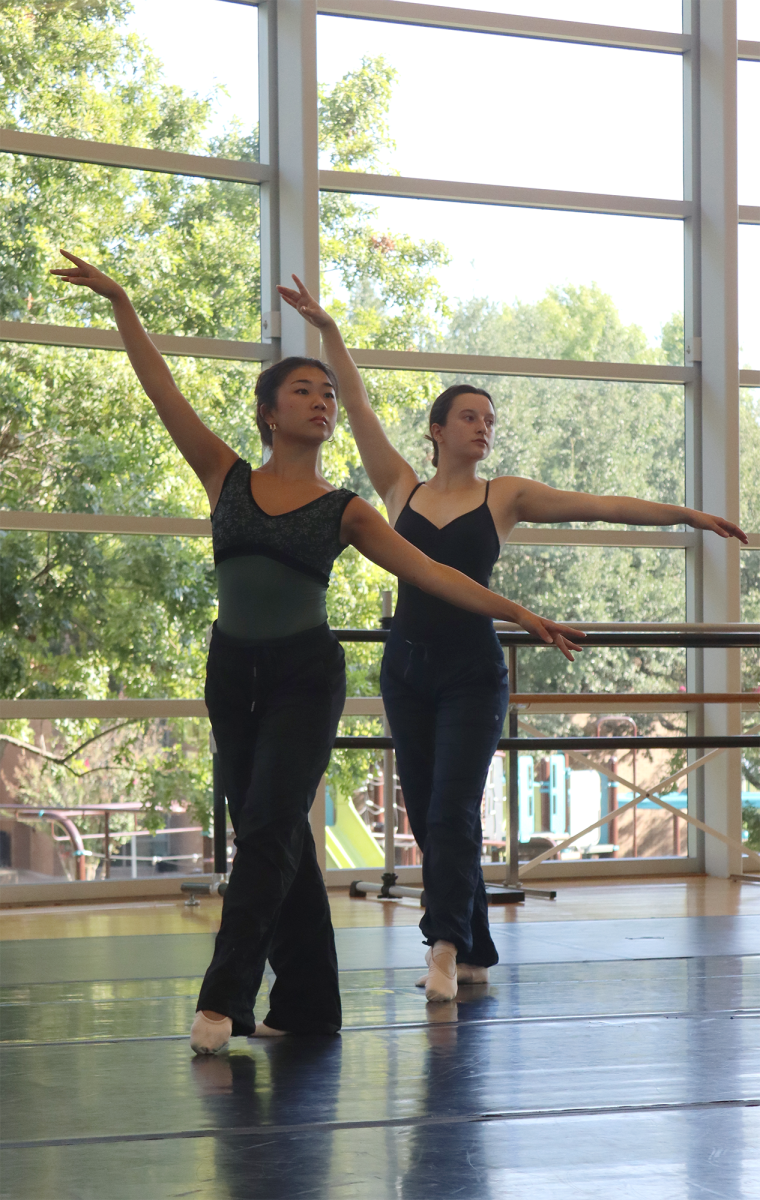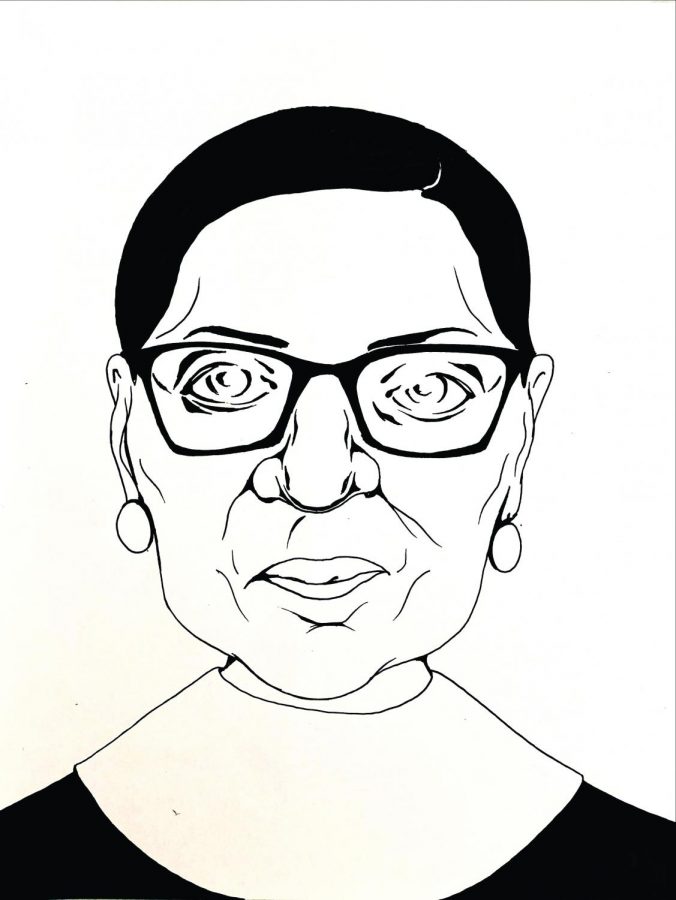The Fourcast delves into one of Hockaday’s most rigorous courses
Senior Miranda Helm spends practically all of her free time in portable eight, the current art studio, where splatters of paint decorate the tables and every inch of the portable is lined with art pieces. She has spent many late nights hitting the books at the Hockaday library. All that work won’t prepare Helm for the AP Studio Art exam.
Her exam preparation has been a year in the making. Or rather, four.
The Fourcast goes behind the scenes to unveil the rigor and roughness of AP Studio Art, which is often nicknamed the hardest AP by high school students.\

The Course
AP Studio Art is one of many year long AP courses, although work must be put in years in advance through prerequisite courses that include Studio Art I, Studio Art II and Advanced Art.
Helm jokes that AP Studio Art is only for the brave at heart.
“You really need those fundamental years under your belt because we don’t have as much guidance,” Helm said.
During those years, students polish fundamental drawing and painting skills. AP Studio Art teacher Juliette McCullough, who has been teaching this course at Hockaday for 21 out of her 22 years here, attests to the time and patience that must be put forth.
“The ones that are successful are the ones that work out the free periods,” McCullough said. “The ones that are that treat it as a sort of meditation.”
AP Studio Art counts as a solid course, like math, science, language and English courses. Girls cannot exceed taking five solids per year without the permission from the Head of Upper School. Although AP Studio Art is treated as a solid course, McCullough said that many girls use this course as a way to destress from academic burdens.
“Some girls, over the years, have found it a way of being quietly creative to balance their academic work,” McCullough said.
Part of the meditation mentality that many of the girls put to use in this course may be a result of the freedom they are given. When the girls enter AP Studio Art, they are given less direction and more ability to create work driven by their taste and emotions.
“We do have guidance from Mrs. McCullough, but it’s not her telling us how we can improve things necessarily,” Helm said.
Susan Sanders, Visual Arts chair, said that the department plans the curriculum according to the course.
“The accredited AP art instructor at a given school develops a curriculum that is in alignment with the specific parameters dictated by the College Board,” Sanders said. Each year, the curriculum is sent to proctors at the AP board, who will officially approve the material.
According to McCullough’s lesson plans, the girls polish their skills from early August until holiday break. After the break, the girls return, eager to begin their portfolios in preparation for the AP exam in the spring.
Although they look forward to working on their portfolios, many students, including Helm, experience an artist’s form of “writer’s block” when attempting to fill their portfolios.
“It has been stressful…you have to have this many pieces and you don’t have that many pieces. How are you going to catch up?” Helm said.
The concept of having a deadline for art is foreign to the girls at first.
With the turmoil and stress that AP Studio Art produces, a tighter-knit group of artists emerges in May. According to Helm, her favorite part of the course has been bonding with girls whose interests lie in the fine arts.
“I think the camaraderie that we all have built—going through the struggles—this class is very stressful at times,” Helm said. “We kind of just all go crazy together a little bit.”
The “Exam”
Although the course proves to be an enjoyable experience, according to Helm, a final test at the end of the year is necessary. Students must create three portfolios to be graded by the AP College Board in place of a written exam. These portfolios, based on ideas of quality, concentration and breadth, are composed of a total of 29 pieces of art.
The quality section is composed of five pieces of art; the originals are sent off to be graded for technicality and mechanics of the individual artist. Other sections of the portfolio are submitted digitally and the judges never see the hard copies.
The breadth section tests how well an artist can stretch herself, or as McCullough calls it, a game of survival.
“They want to see that you are not just polishing one aspect of your production, one aspect of what you can do. They want to see that you can be put into uncomfortable places and survive,” McCullough said.
In contrast, the concentration section is what McCullough likes to call a visual essay, as it showcases the artist’s talents, and it represents the evolution that an artist will undergo during a project.
“You have your own idea that you want to express in 12 images. And the idea can develop as you are doing it,” McCullough said.
Although the students are able to use any of their pieces from any year in Studio Art or Advanced Art, the course is still very challenging and taxing on a high school student, and the grading standards are what puts it in the ranks for the hardest AP.
“The grading standards have gotten higher and higher, and I think ridiculously so, really,” McCullough said.
And it’s not just art skills that are put to the test; this portfolio tests many other skills that girls accumulate while at Hockaday.
“Successful execution of the portfolio requires higher level thinking, demands higher level skill sets, serious dedication and asks the artist to develop and demonstrate a personal, meaningful connection to her work,” Sanders said.
To achieve a score that will give a student college credit, much attention, precision and time are necessary.
The solid accreditation that AP Studio Art receives at Hockaday is a result of the time that the girls must put into their portfolios.
Once the portfolios are sent off, they are judged by a panel of judges, who are specially trained according to the standards of AP Studio Art. According to the College Board, each portfolio is reviewed several times by several different judges to ensure consistency in scoring. This process is long and painful, as not everyone always agrees on what AP grade the portfolio should earn.
Judges grade the artwork on a scale of one through six, with one being the lowest possible score and six being the highest score. Then, they adjust the grade to fit the usual one through five grade range that other AP tests are scored on. This score is the one seen by the student.
The Aftermath
After the year-long AP, many of the girls go on to study some sort of fine art in college.
“It is a sort of foundation for almost anything in the art world,” McCullough said.
Although the girls do not always directly study a fine art or go into careers as an artist, many of them use these foundational skills to take on jobs as filmmakers and product designers.
According to Sanders, many of the girls also put their Studio Art techniques to work in the science, technology, engineering, arts and mathematics fields—STEAM is an up and coming field that bridges fine art with science and engineering and is emphasized in the curriculum at Hockaday.
“There are many Hockaday students who use their AP Studio experiences to develop careers that bridge many different creative fields, including but not limited to art, science [and] engineering,” Sanders said.
Helm has already found her niche in design. She regularly puts to use her AP Studio Art skills within Hockaday productions, including musicals and plays. Trading in a paint brush for power tools, Helm worked on the set of “The Tempest” this spring.
“I don’t know how it relates to AP, but l am doing art all of the time,” Helm said. ‘It is just a really fun thing to do.”
– Mary Claire Wilson













